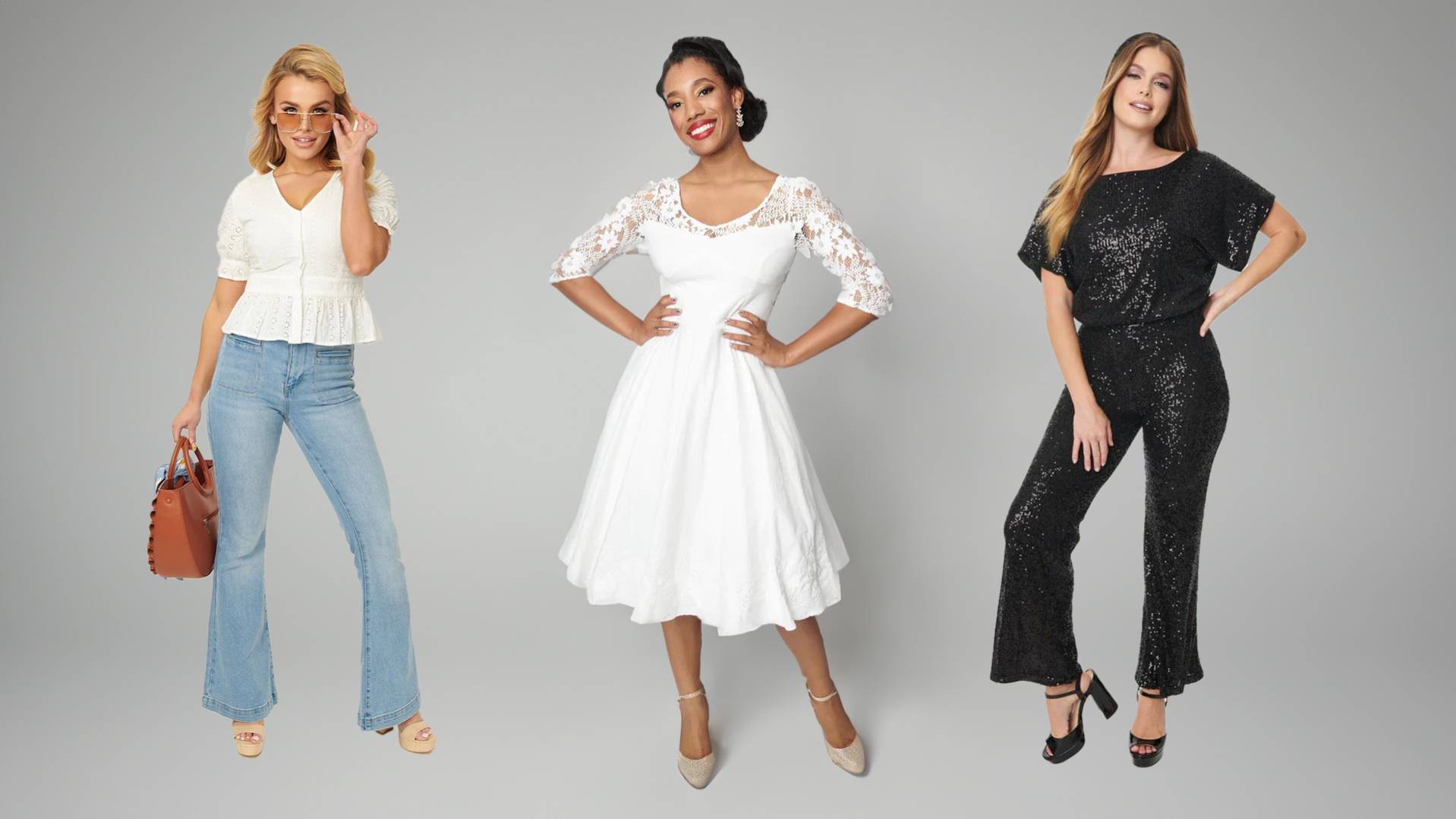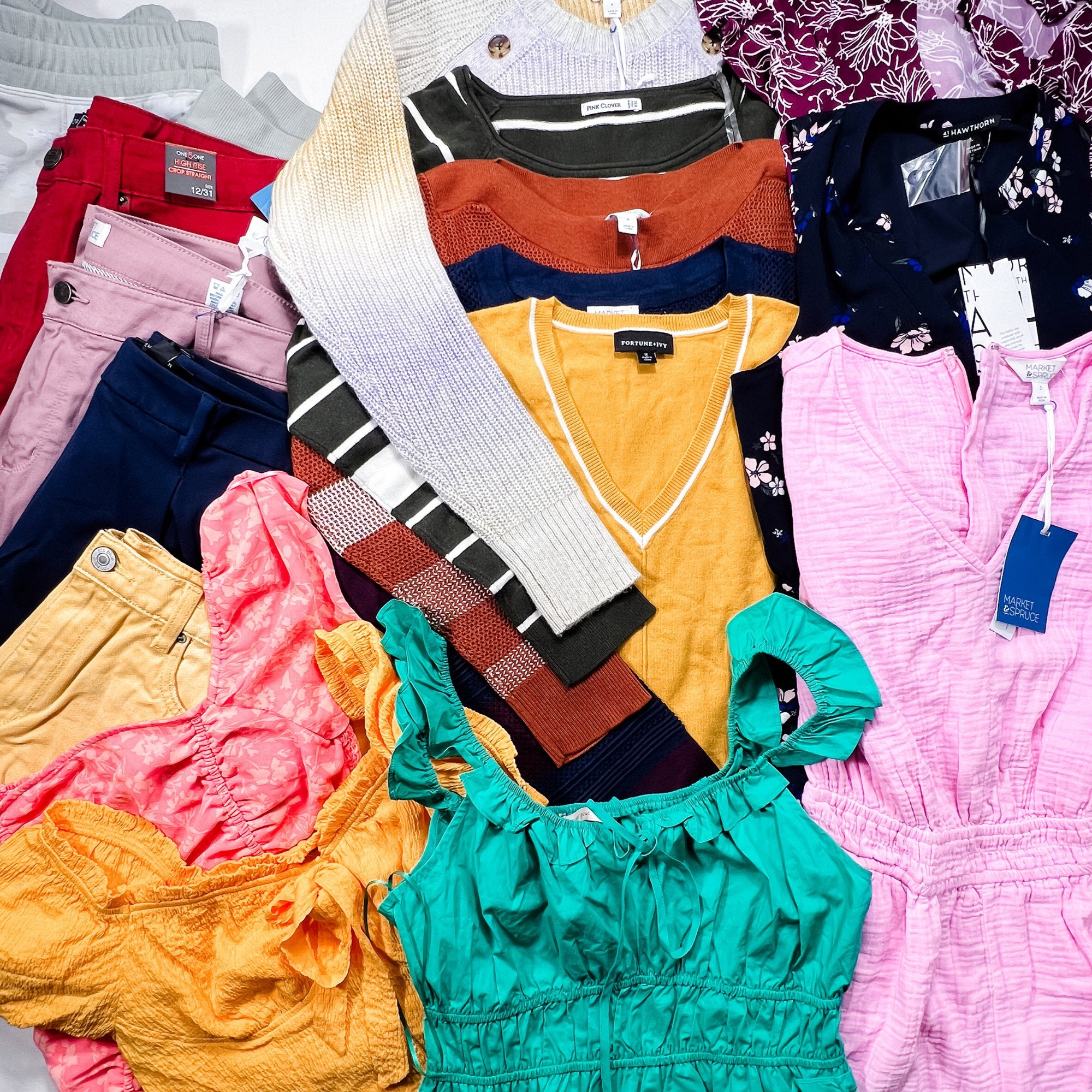Is Branded Clothing Really Better Because of the Fabric?
Is Branded Clothing Really Better Because of the Fabric?
Blog Article
The Relevance of Lasting Clothes: Exactly How It Influences the Environment and Your Closet
Lasting apparel is significantly identified for its crucial role in minimizing the environmental influence of the fast garment industry. By concentrating on environmentally friendly products and ethical production approaches, it attends to pushing ecological concerns. This change not only benefits the earth however also influences consumer choices, leading to an extra thoughtful method to wardrobe monitoring. Recognizing these dynamics increases crucial questions concerning style's future and personal responsibility in shaping it.
The Environmental Footprint of Quick Fashion

Advantages of Sustainable Materials
Lasting materials supply considerable advantages, specifically through environmentally friendly textile options that reduce environmental harm. These products additionally demonstrate sturdiness and longevity, decreasing the demand for constant substitutes. Because of this, they add to a much more sustainable fashion sector and advertise liable consumer actions.
Eco-Friendly Textile Choices
While the apparel industry has long been associated with rapid patterns and environmental injury, the rise of green textile selections provides a transformative chance. Lasting materials such as natural cotton, hemp, and Tencel have acquired popularity due to their reduced eco-friendly impact. These fabrics are commonly created without dangerous chemicals and need much less water, minimizing their carbon footprint - Branded Clothing. In addition, lots of environment-friendly textiles are naturally degradable, adding to a round economic situation by reducing waste. Selecting sustainable materials not just supports eco accountable practices but also advertises healthier communities. As customers become a lot more knowledgeable about their buying power, the demand for eco-friendly materials encourages brand names to introduce and adopt even more lasting manufacturing approaches, ultimately benefiting the planet and future generations
Durability and Durability Advantages
Numerous consumers are significantly recognizing the toughness and longevity benefits of lasting materials in their clothes options. Unlike traditional materials, sustainable products such as natural cotton, hemp, and recycled polyester are crafted to stand up to deterioration, resulting in garments that last much longer. This decreased frequency of substitute not only saves customers money with time but additionally diminishes waste generated by fast fashion. In enhancement, sustainable clothes typically uses environmentally friendly manufacturing approaches that enhance material strength, contributing to a reduction in the total carbon footprint. By purchasing long lasting garments, consumers can grow a much more lasting closet while appreciating high-quality items that maintain their visual and performance gradually. Subsequently, sturdiness and longevity stand as essential advantages of choosing sustainable products.
Minimizing Waste With Sustainable Practices
Lowering waste in the style industry can be attained with innovative methods such as upcycling and repurposing products. Furthermore, taking on minimal closet approaches motivates consumers to prioritize high quality over quantity, ultimately decreasing clothes usage. Together, these methods contribute considerably to an extra lasting clothes version.
Upcycling and Repurposing Materials
Upcycling and repurposing products have actually become cutting-edge techniques in the apparel industry, changing disposed of textiles right into important brand-new products. This technique not just decreases waste yet additionally motivates creativity and individuality in garments design. By taking old garments and materials, developers can produce unique items that show personal style while lowering the demand for brand-new sources. Furthermore, upcycling commonly requires much less energy and water compared to standard production procedures, significantly decreasing the environmental impact of style. As customers end up being more mindful of sustainability, the appeal of upcycled apparel remains to increase, advertising a round economy. Inevitably, these methods contribute to a much more lasting future, where style focuses on environmental health and wellness over rapid manufacturing and usage.

Minimalist Closet Strategies
As people increasingly seek to lessen their environmental impact, adopting minimal wardrobe methods has gotten grip as an effective method to sustainable style. These techniques highlight top quality over amount, motivating consumers to curate a smaller sized collection of versatile, long lasting garments. By concentrating on classic items that can be combined and matched, individuals can lower the regularity of acquisitions and ultimately decrease waste.Additionally, minimalism advertises mindful usage, urging shoppers to assess the ecological and ethical implications of their selections. This method not only fosters a much more lasting way of life however likewise simplifies day-to-day decision-making pertaining to attire. As individuals embrace minimalist principles, they add to a style society that values sustainability and accountable consumerism, eventually leading to a much more eco-conscious culture.
The Function of Moral Labor in Lasting Style
While many customers are increasingly knowledgeable about the environmental repercussions of their apparel choices, the value of honest labor methods in lasting fashion can not be neglected. Honest labor encompasses fair wages, safe working problems, and regard for employees' rights, developing the backbone of liable style manufacturing. Brand names that focus on ethical labor not helpful hints just boost neighborhoods however additionally established a standard for responsibility in the industry.Moreover, the combination of moral techniques promotes transparency, allowing customers to make educated options about their acquisitions. This method contrasts greatly with fast fashion's unscrupulous labor models, which frequently prioritize earnings over individuals. By supporting firms dedicated to moral labor, consumers contribute to a system that values human dignity along with ecological sustainability. Consequently, honest labor is not simply an add-on; it is necessary to the wider objective of lasting fashion, guaranteeing that the quest for eco-friendliness does not come with the cost of human civil liberties.
The Influence of Lasting Apparel on Carbon Emissions
Sustainable clothing has the possible to significantly decrease carbon discharges connected with the garment industry. Typical garment manufacturing contributes notably to greenhouse gas discharges, mainly due to energy-intensive production procedures and making use of non-renewable resources. On the other hand, lasting fashion focuses on eco-friendly products, such as organic cotton or recycled fibers, which often call for much less energy to produce.Moreover, sustainable brand names often tend to embrace extra effective manufacturing practices, lessening waste and lowering general exhausts. By prioritizing durability and classic design, lasting clothing encourages customers to buy less frequently, more reducing the carbon footprint related to overconsumption.Additionally, lots of lasting brands are committed to openness in their supply chains, making it possible for consumers to make enlightened options that line up with their worths. Inevitably, changing towards lasting clothes can cause a significant reduction in carbon exhausts, adding to a much healthier earth and a more sustainable future for the apparel industry.
Sustaining Regional Economic Climates With Sustainable Selections
The change towards lasting clothes not only addresses ecological concerns yet likewise considerably benefits neighborhood economies. By picking sustainable fashion, consumers often sustain local artisans and local business, enhancing area strength. These business typically operate a smaller sized scale, focusing on workmanship and ethical techniques over mass production.Investing in locally made lasting clothes cultivates job production and stimulates economic development within neighborhoods. As consumers come to be a lot more mindful of the ecological impact of their purchases, they increasingly seek products that show their worths. This demand encourages neighborhood makers to take on lasting techniques, adding to a circular economy.Moreover, supporting neighborhood companies reduces transportation discharges, lining up with eco-conscious consumer behavior. The interconnectedness of lasting clothing and regional economies highlights the crucial role that specific selections play in promoting both ecological and economic wellness. By cultivating these regional links, areas can grow while also functioning in the direction of a much more lasting future.
Transforming Your Closet: Tips for a Lasting Closet
As individuals seek to decrease their environmental influence, changing a storage room right into a lasting wardrobe ends up being a crucial step. One efficient method is to examine existing clothing, maintaining just products that are used on a regular basis and that line up with sustainability objectives. Prioritizing quality over quantity is crucial; buying durable items from eco-friendly brand names can greatly lower waste.Additionally, including used products can revive a wardrobe while decreasing ecological damage. Organizing clothes swaps with buddies or donating extra items can better promote sustainability.When purchasing, people must seek materials that are organic, recycled, or eco-friendly, and prevent rapid style stores - Branded Clothing. Practicing conscious intake by thoughtfully thinking about each acquisition can contribute to an extra sustainable way of life. By carrying out these suggestions, one can produce a closet that reflects personal style while supporting article ecological stewardship
Often Asked Inquiries
Exactly How Can I Identify Lasting Clothes Brands?
To identify sustainable clothes brands, one must investigate materials made use of, inspect for accreditations like Fair Profession, and take a look at the brand's transparency regarding their manufacturing processes, labor techniques, and ecological influence, making sure environment-friendly and ethical practices are focused on.
What Are the Costs Connected With Lasting Fashion?
The costs connected with sustainable fashion can differ considerably. Higher manufacturing expenditures, more honest sourcing, and environment-friendly products typically result in boosted market prices, which may deter some consumers while attracting eco aware buyers.
Can Lasting Clothes Be Fashionable and trendy?
Lasting clothing can certainly be stylish and trendy. Developers progressively focus on ingenious products and moral production approaches, verifying that fashion and sustainability can exist together. Customers currently have varied options that blend aesthetic appeals with environmental awareness.
Just How Does Washing Clothes Affect Their Sustainability?
Washing garments significantly impacts sustainability by consuming water and energy, adding to pollution, and causing microplastic launch. Constant washing can deteriorate fabrics, reducing their lifespan and boosting the requirement for replacements, inevitably exacerbating ecological issues.
What Is the Lifespan of Lasting Apparel Contrasted to Fast Style?
The lifespan of sustainable garments typically goes beyond that of rapid style things, typically enduring a number of years because of quality materials and craftsmanship. In comparison, quick style garments may deteriorate promptly, necessitating more frequent replacements. Sustainable clothing is progressively recognized for its essential duty in minimizing the ecological influence of the quick style market. While many customers are increasingly conscious of the environmental consequences of their clothing options, the importance of honest labor methods in sustainable style can not be overlooked. Branded Clothing. Sustainable garments has the possible to substantially reduce carbon discharges associated with the fashion industry. In contrast, lasting style concentrates on environmentally friendly products, such as organic cotton or recycled fibers, which usually need less energy to produce.Moreover, lasting brands have a tendency to take on much more efficient manufacturing methods, reducing waste and lowering overall discharges. By prioritizing sturdiness and timeless design, sustainable apparel encourages consumers to buy much less regularly, more reducing the carbon footprint connected with overconsumption.Additionally, numerous lasting brand names are devoted to openness in their supply chains, allowing consumers to make informed options that line up with their values
Report this page